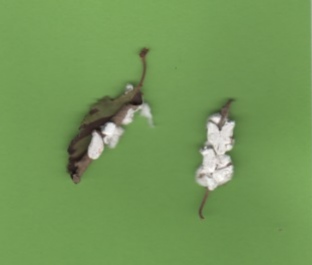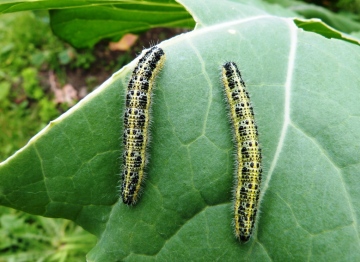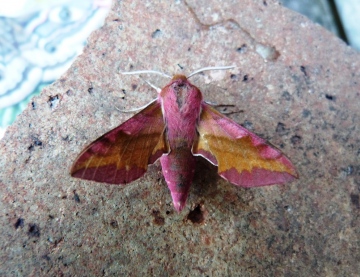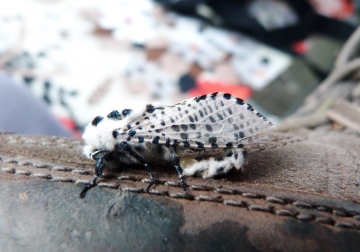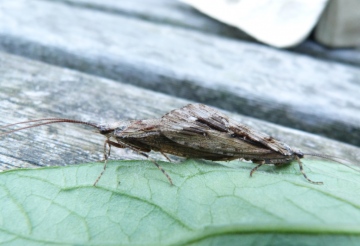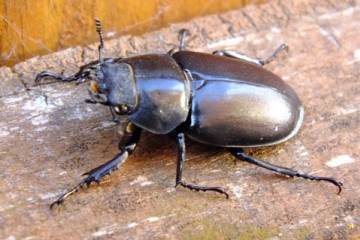Your Forum
The weblog below is for naturalists to use to report interesting sightings, ask questions, report on field meetings and generally post pictures and any information or questions generally relevant in some way to the wildlife and geology of Essex. You will need to register and be logged-on to post to the forum, and you need to upload pictures first, for use in posts. Find out more
|
Sat 27th July 2013 19:13 by Mary Smith next instalment
After the sudden heavy shower of rain we got a couple of nights ago, all the curled up leaves with white bits on are now on the grass below, and the small Prunus has only healthy green leaves on it. I don't know if that helps with identification, but probably not. If it is a scale insect or woolly aphid, should I gather up the fallen leaves and burn them, or is it already too late? Wed 24th July 2013 17:49 by Peter Harvey Re Mystery in the Garden
I have already suggested to Mary from what little can be seen from the photograph that I imagine her white stuff will be produced by a scale insect or woolly aphid and she is more likely to get an answer from the RHS (Royal Horticultural Society). There are no easily available keys to species in these groups and few naturalists specialise in them. Wed 24th July 2013 17:27 by Graham Smith Mystery in the Garden
Mary has asked me to post this photograph on the forum with the accompanying email to me regarding it.
Attached is a picture of two shrivelled leaves from my drought-stricken small Prunus cultivar in our front garden. The white pieces on the leaves look at first sight like bird droppings, but on closer inspection they are white cottony stuff, in separate pieces all about the same size, a few mm long. On closer inspection they are lightly grooved, like icing from a fluted funnel. Each bit has a small area that is light brown. It is not a fungus. I would love to know what animal made this, and what for. I wrote back suggesting the following : I have consulted my Encyclopedia of Gardening and the most likely thing I can come up with is the egg mass of some kind of Scale Insect. These resemble the white cotton wool-like material you describe and since you emailed me I have seen similar leaf damage on a Wild Cherry near my home. The ‘cotton wool’ is the eggs, not a material covering them. Have you had any better offers? But then Mary replied : I have used my microscope and I can find only fine wiggly tangled threads using x40 and x200. No sign of any eggs or other animal parts. I am still baffled. Please would you be able to post my pic and most of my text on My Forum? Which I have now done. We appear to be no further forward. It is not a fungus, a mould or a mildew; nor the eggs of an insect, Scale, or otherwise. So what is it? Any ideas the two Peters? Mon 15th July 2013 15:53 by Graham Smith Potatoes etc
Two Tuesdays ago I was on board the Maldon Barge 'Thistle' for a two hour trip to Osea Island and back. The sky was grey, the sea was grey, and everything in between was grey, and we shivered in our winter woollies as the temperature struggled to reach 10`C. Three days later it was touching 30`C and since then everything in the garden has begun to wilt, including the gardener! The potatoes - second early 'Swift' in my case - put on a tremendous surge of growth above ground back in the spring, making the most of the residual moisture in the soil from last winter, but have now started to sag and, below ground, there are just enough tubers on each plant to provide a meal for two people. Elsewhere in the garden the Spinach has bolted, the Spring Onions are sprawled across the ground, the Strawberries are sweet but chewy, and the Purple Spouting is under attack by these little fellows :
I was happy to share my crop with the single Cabbage White that arrived in May as it is a butterfly after all and butterflies of any description were few and far between in the 'spring' but now it has gone and told its mates! Hopefully their offspring will stick to the leaves and not eat the flowers, which I am already beginning to harvest. It has been a funny old year. At Blue House, Andrew, the stockman, was complaining that the grass had also 'bolted'; "all head and no body" is how he put it. There was plenty of it and it looked impressive but when you examined the individual plants there was often only one or two seed heads arising from the tillers rather than the half dozen or more normally to be expected. The annual plants such as vetches and vetchlings that usually tinge the meadows purple also failed this year. Virtually every living thing is late - plants, butterflies, dragonflies, moths and bees among them. Most birds also nested 2-3 weeks later than usual. Lapwings laid their first egg in the third week of April rather than the last week of March and although many on the reserve now have fledged young in tow, at least three pairs have hatched out chicks in the past week, an extraordinarily late date as they will not fledge until mid-August. Still, now that the hot weather has arrived, some species are making up for lost time. Following the quietest spring for moths in the garden since I first began trapping in 1990 it is turning into one of the best summers for over a decade. Two recent captures have been my first Small Elephant Hawk Moth and the equally beautiful Leopard Moth, a curious beast which tries to curl into a 'ball' like a caterpillar when threatened, as can be partly seen on this photograph. Last week I counted 900 Meadow Browns on my weekly butterfly transect at Blue House, a number that could well be exceeded tomorrow if I can persuade myself to brave the heat. There were also a few Marbled Whites on the wing while last Saturday I was treated to excellent views of a Silver-washed Fritillary at Twitty Fee, Danbury. It is great to see this species on the increase in Essex again. Small Tortiseshells are also making a comeback this summer after more than a decade in the doldrums, and Rob Smith, the FC butterfly recorder, counted over 100 nectaring on thistles along the River Wid close to here a week ago, Finally, a shot of a pair of very impressive Caddis Flies, which turned up in my moth trap last night. I think they might be Phryganea grandis, Britain's largest species but there is apparently a very similar species (there always is!), namely P. striata. They presumably emerged from my small garden pond, as do the numerous other Caddis that turn up in the trap, but following days of boiling weather I fear that it is more of a bog than a pond at the moment. Tue 9th July 2013 17:06 by Mary Smith Potatoes and Grape vine
Our first early potatoes were planted when spring arrived, about mid April, which was over a month later than usual due to the late cold spring. My favourite variety for our light soil is Rocket, but it has not rocketed this year. Now the leaves are dying off at last and the minute new potatoes are the poorest crop I can ever remember. Not blight, but drought, that I had not realised was so severe. The soil is absolutely bone dry down a whole spade depth and more. I know we only had 2cm of rain in June, but earlier months had rain enough, or so I thought, but clearly not. In case you don't know, I live in Upminster. Is this sudden heat part of the problem? I don't know.
Those of you with long memories may remember that I used to write a Wildlife Diary in the EFC Newsletter, and, if your memory is particularly good, you may remember about 7 or 8 years ago when I wrote that we had a 'wild' Grape Vine appear in our garden, conveniently close to a fence, up which it climbs every year. We were looking forward to getting our own grapes and then making our own wine: Chateau Smith. Sadly, we are not there yet, but we are now very excited as we found lots of flowers, out, on our vine, the first flowers we have seen! We have had flower buds a-plenty, but they never opened. Now we have seen the tiny green flowers all open, stamens sticking out, and we hope the weather stays like this long enough to get some ripe grapes! Then some wine! Here's to a long hot summer at last! Tue 2nd July 2013 19:43 by Peter Pearson Stag Beetle Mon 1st July 2013 07:26 by Peter Harvey Re: Continental Invader
Yes, the shieldbug Tritomegas sexmaculatus is definitely one to look out for, although I am not sure I agree that Faversham is only a stones thrown from Essex! (pretty much an hour's drive on the M2 from the Dartford Crossing). If it's not in south Essex now, it surely soon will be.
Please note the similarity to the native Tritomegas bicolor which may be found feeding on the aerial parts of white dead-nettle and black horehound, the main hostplants. The UK Bugs website indicates that Tritomegas sexmaculatus was found during 2011 at two sites in Kent, in both cases feeding on black horehound, the most frequent foodplant on the continent - so the foodplant is not a guide to the species, one needs to look at the more extensively white margins of the pronotum and the much darker (black) wing membrane (http://www.britishbugs.org.uk/heteroptera/Cydnidae/tritomegas_sexmaculatus.html |
Archives: May 2020Aug 2019 Jan 2019 Sep 2018 Jul 2016 Oct 2015 Jul 2015 May 2015 Apr 2015 Mar 2015 Feb 2015 Jan 2015 Dec 2014 Oct 2014 Sep 2014 Aug 2014 Jul 2014 May 2014 Apr 2014 Mar 2014 Feb 2014 Jan 2014 Dec 2013 Nov 2013 Sep 2013 Aug 2013 Jul 2013 Jun 2013 May 2013 Apr 2013 Mar 2013 Feb 2013 Jan 2013 Dec 2012 Nov 2012 Oct 2012 Sep 2012 Aug 2012 Jul 2012 Jun 2012 May 2012 Apr 2012 Mar 2012 Feb 2012 Jan 2012 Dec 2011 Nov 2011 Oct 2011 Sep 2011 Aug 2011 Jul 2011 Jun 2011 May 2011 Apr 2011 Mar 2011 Feb 2011 Jan 2011 Dec 2010 Nov 2010 Oct 2010 Sep 2010 Aug 2010 Jul 2010 Jun 2010 May 2010 Apr 2010 Mar 2010 Feb 2010 Nov 2009 Oct 2009 Aug 2009 Jul 2009 Jun 2009 May 2009 Apr 2009 Mar 2009 Feb 2009 Jan 2009 Nov 2008 Oct 2008 Sep 2008 Aug 2008 Jul 2008 Jun 2008 May 2008 Apr 2008 Mar 2008 Feb 2008 Jan 2008 Dec 2007 Nov 2007 current posts |
























